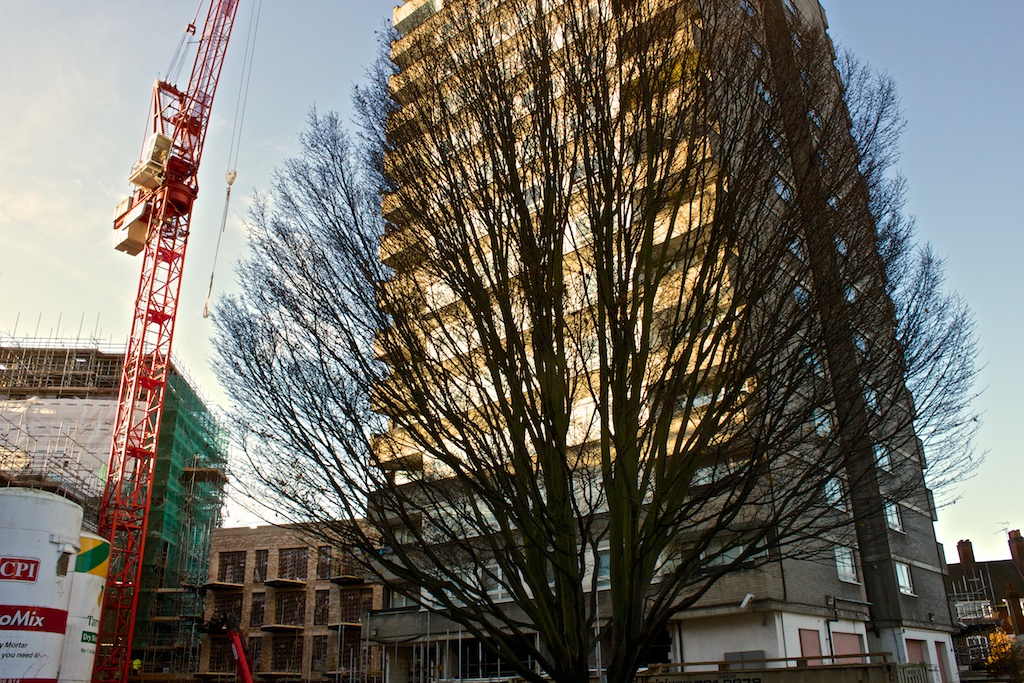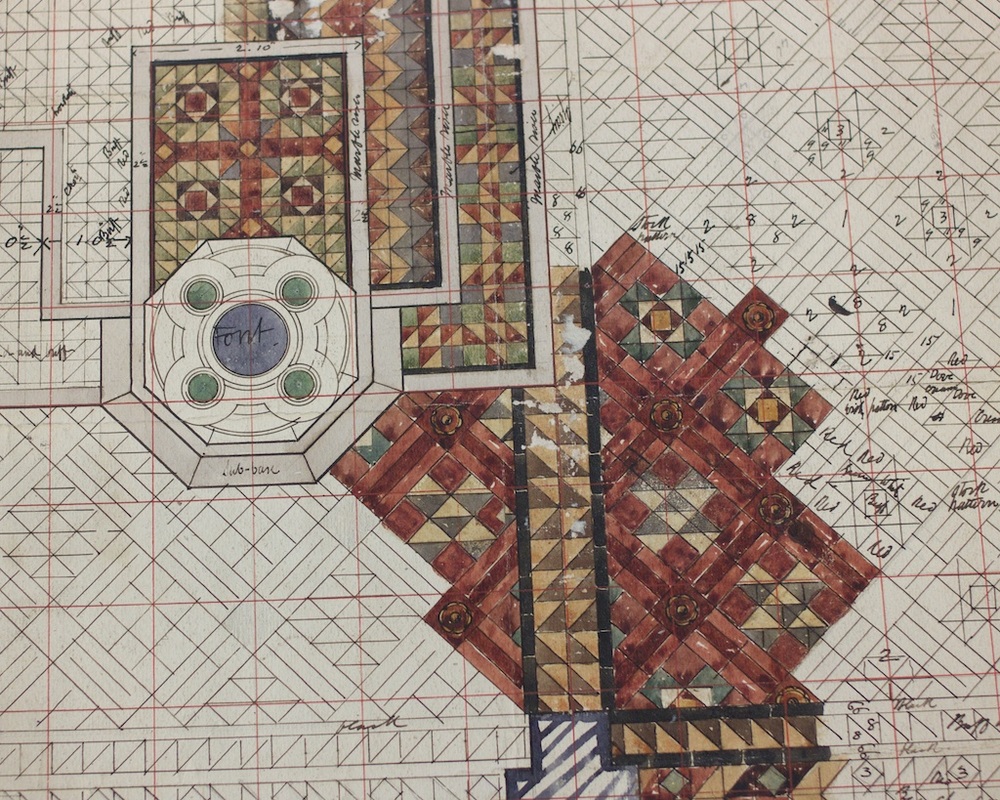|
I recently recorded an interview with Joanna Sutherland, Associate Architect at Haworth Tompkins. We discussed a range of topics focused around More West: partnership working, design principles, gentrification and the status of women in the profession. Not all of these made it into the short film. More West is the first housing development in this area of North Kensington since the social housing of the 1960s-70s. It is building onto the pre-existing Silchester Estate and is incorporating Frinstead House, a twenty-floor high rise. It is an indication of how development will take place in the future. This Peabody housing consists of 112 flats with mixed social and market tenure. As community artist, I am very interested in how this development will change the area and what type of community is forming here. These formed the basis of some of my questions to Joanna. Constantine Gras: "What type of community is going to be forming as a result of this development? Obviously we've got the pre-existing community that exists as part of the wider estate. Probably the new incoming residents will be more of a professional or affluent class. Have you got a sense of how this is forming and what potential impact this may have on the wider area, either positive or negative? Joanna Sutherland: "It's difficult to understand exactly how this development will impact on a community. It's unusual to work on a housing project where you know a number of the residents that are going to be remaining within the development. So having the decant residents remaining in the estate is an important continuity. Also I understand that the priority for the new social rent units will be to move people from the nearby estates. But this is a question for Peabody and RBKC. They are prioritising the immediate community for location in these units, if they need to go up in size or down. Then we'll have shared ownership and market units that are smaller, one and two bedroom. And in the second phase of marketing I think there are a few larger units. Those are being sold on the open market. I understand also that Peabody's policy is they are not necessarily being sold as buy-to-let. They are sold to people who are wanting to move into the area and can afford to buy obviously. The design of the estate and the design of the new block is integrated. So there is no distinction between social rent units or the affordable and the market units. And the private communal garden space is to be shared by the new residents and the residents of Frinstead House. So one hopes that the design and also the way in which the new social rent homes are allocated, as well as whose buying these homes, means that a mixed community is going to evolve. I think the potential area of conflict will be with the existing residents within the high rise. I understand they have been particularly frustrated with the time the development is taking, with the noise and the ongoing impact on them. They have been quite inconvenienced by the work and one hopes that once the development is complete and they have their new entrance and access to the garden, that the disruption will become a memory. And they will start to enjoy it. We can create some good community events, especially with the existing community space at the base of Frinstead House as this has access to the garden. So with careful organisation through the Silchester Resident's Association, we want to find ways in which people can come together with the new residents. Add to that, there is the work that Nathan Coley is doing with his new sculpture on the roof. That is at least a sort of talking point. It creates something that enables the future community to be brought together. And obviously the work that you are doing as V&A Community Artist in Residence. I don't know whether we can do much more. Constantine Gras: My question is keying into the notion of gentrification which is an ongoing social issue. Especially in the redevelopment of estates. Joanna Sutherland: "The gentrification? I don't really like the word gentrification. In fact, if this regeneration is gentrification, then I'm not sure that is a good thing. One hopes that this regeneration is creating a mix of communities with people from different walks of life. Those who can afford the market units are not necessarily going to be those that are capable of buying the most expensive properties in RBKC. And certainly those that will be buying the shared ownership will probably be more key workers. I would hope across the board there is a range of residents and that will be a positive thing. There's a very interesting display at the V&A that is showing in Gallery 127 until 29 March 2015. Architects as Artists poses the question: why do architects create art? Drawing has always had a very close link with architectural practice. In the modern era, we have computer aided design. I recently looked at some drawings made by John Francis Bentley for the church at St Francis of Assisi. This is on Pottery Lane, just a stone's throw from my studio. I often wander down here during my lunch break and reflect on my art practice. His architectural DNA and that of Nathaniel Westlake (as panel painter and stain glass artist) look large here in all the attention to design. Bentley's drawings in the RIBA collection at the V&A are wonderfully evocative. A real labour of spiritual love. As a multi-media artist, what do I make of architecture? It is one of the themes of my residency. Observing at close hand the More West development, I have tremendous admiration for the skill and craft of architects and builders (who have to interpret those drawings). Also a tremendous responsibility to get it right. Ideas and drawings have to be translated into spaces that will be lived in for generations. I am a self-taught, improvising artist, who occasionally dips his toes into representational art. Only now in my fourth decade am I beginning to keep a sketch book. I walk around the V&A and resist the temptation to snap a photo. Well, only after I have put pen to paper and want to have the digital image as a reference point. It is never too late to learn and this often involves a process of unlearning.
5 Comments
20/10/2021 12:42:24
Hello, Thank you for your kind feedback.
Reply
20/10/2021 12:43:31
Hello Karen,
Reply
19/11/2021 10:02:05
Great article! Thank you for sharing this informative post, and looking forward to the latest one.
Reply
Leave a Reply. |
Categories
All
Archives
May 2024
|






 RSS Feed
RSS Feed
